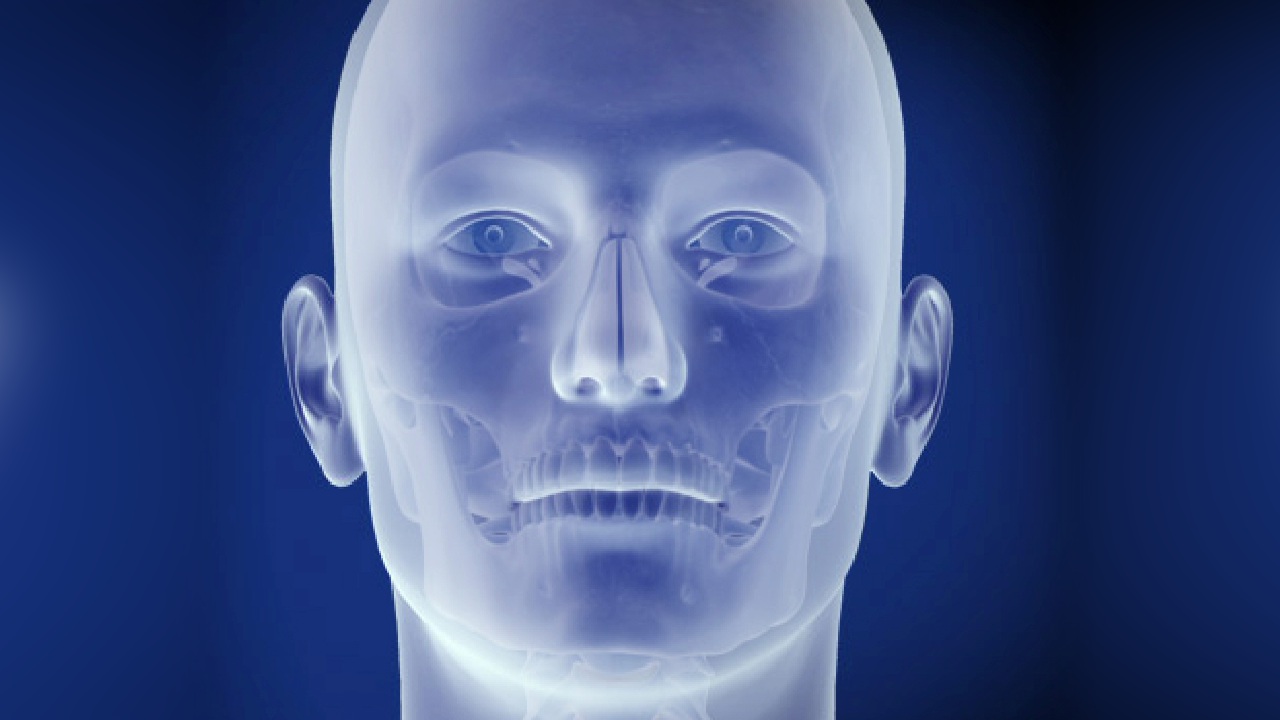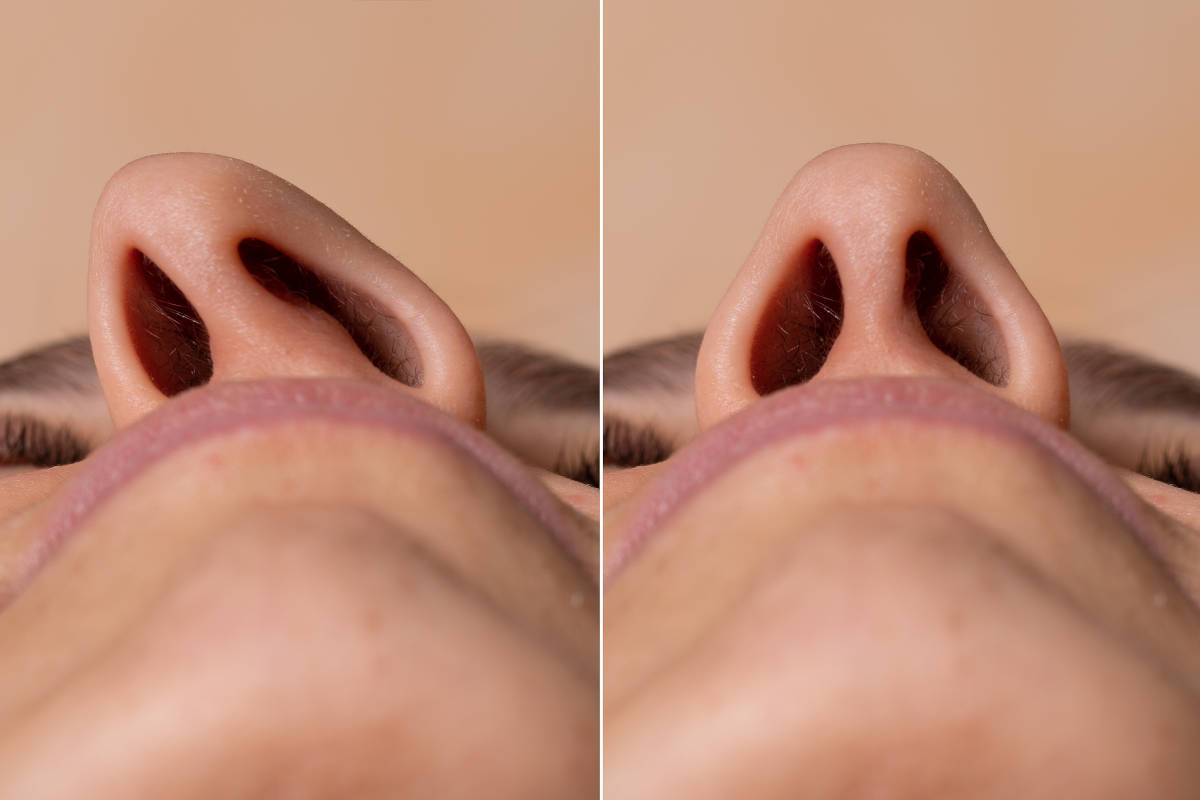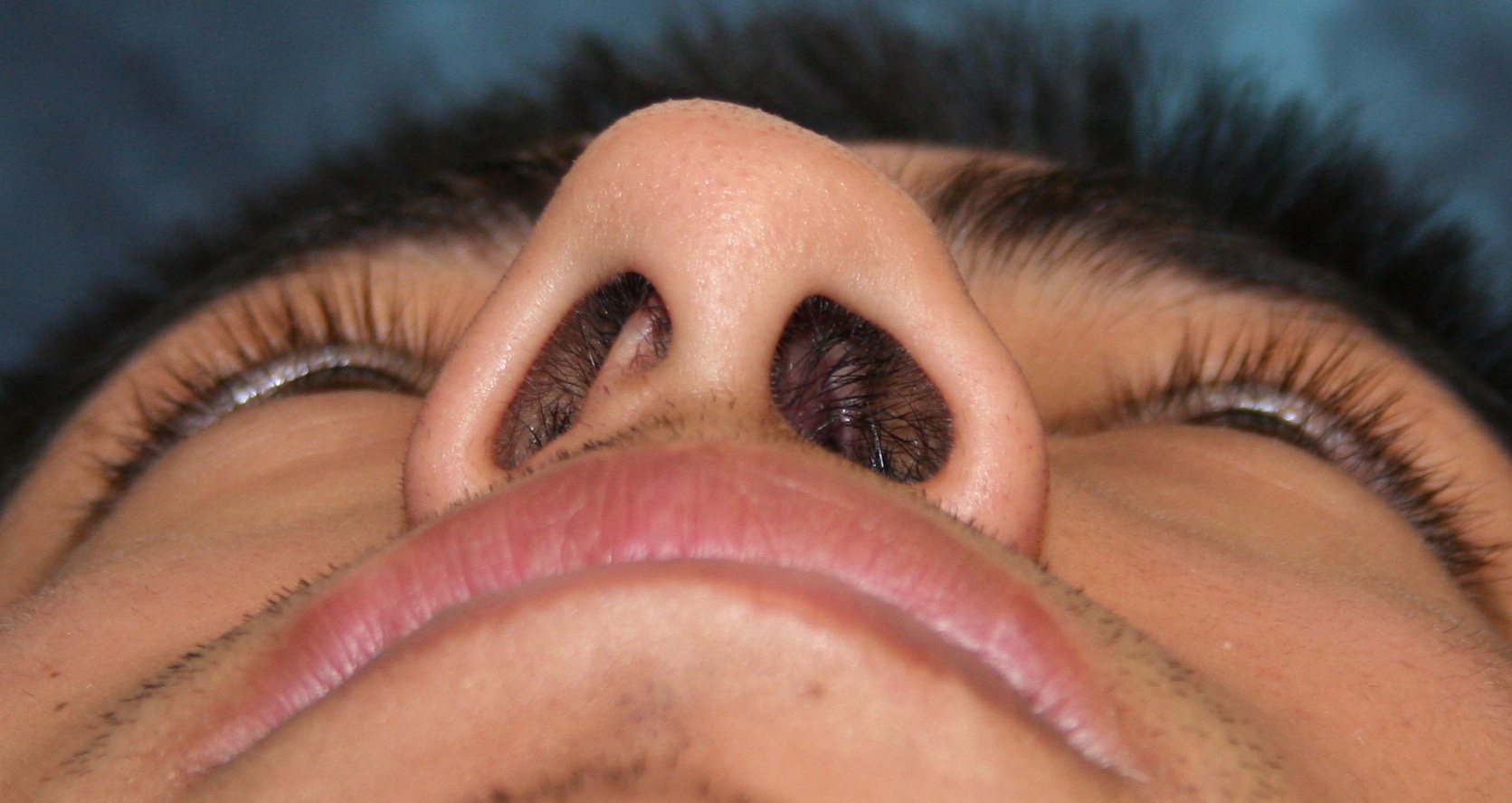What is a Nasal Deviation and How Can We Detect It?
In addition to people who are dissatisfied with the hump, bump, size, and shape of their noses and are considering rhinoplasty, those who suffer from nasal deviation can also resolve their respiratory and cosmetic issues through this surgery. In other words, a nose job is not only for cosmetic purposes or for treating nasal polyps, but individuals can also use this procedure to address issues such as nasal deviation or fractures, and easily achieve the nose they desire. This nasal structure problem can be present from birth or occur for various reasons, but in any case, its treatment requires a professional and experienced specialist. In this guide, we will discuss this issue further.
What is Nasal Deviation?
When you hear the term “nasal deviation,” you might think that deviated noses have crooked or misshapen appearances, but this is not necessarily the case. Noses that are deviated typically appear normal because the deviation occurs beneath the skin and cartilage of the nose.
The nasal septum may shift to one side, which can cause the nose to lose its normal and typical appearance. Keep in mind that in most cases, this problem causes the nostrils to narrow, leading to respiratory issues or disorders.
Unfortunately, when this problem arises, one side of the individual’s airway becomes blocked, making it difficult for them to breathe properly. This issue can even lead to obstruction and dryness of the nasal airflow, which can result in additional complications and discomfort.
Symptoms of Nasal Deviation
In some cases, nasal deviation may exist without any symptoms, and individuals may not even realize that they have this nasal issue. However, in other cases, this disorder comes with clear symptoms, which we will list and explain below:
- Nasal Congestion: It is well known that congestion in one or both nostrils can obstruct your airway. Unfortunately, this issue worsens after a cold or when allergies are aggravated.
- Nosebleeds: Since nasal deviation can cause dryness inside the nose, this dryness may lead to nosebleeds.
- Facial Pain: You may experience pain in the area where the issue exists, which is a normal reaction.
- Noisy Breathing During Sleep: Nasal deviation can cause individuals to breathe noisily while sleeping. Swelling in the nose along with the deviation can exacerbate this issue.
- Sleeping on One Side: Some people believe they can breathe more easily by sleeping on one side, which is often a sign that their nose is deviated.
How to Detect the problem?
Although in some cases the deviation exists beneath the layers of skin and tissues and is not easily detectable, in more severe cases, individuals can easily identify this issue. In other words, in some instances, nasal deviation may also cause a noticeable change in the appearance of the nose.
In addition to changes in the appearance of the nose, other signs exist to detect this problem, which may not be related to the external appearance of the nose. For example, if you only use one nostril to breathe, you most likely have this nasal issue. Other symptoms that help diagnose this deviation include:
- Difficulty breathing through both nostrils
- Headaches
- Severe nasal congestion
- Noisy breathing during sleep
- Nosebleeds
- Sinus inflammation (sinusitis)
- Poor sleep or sleep apnea
- Snoring
What Problems Can Nasal Deviation Cause?
Many people suffering from nasal deviation often ask what problems this issue can cause and whether they should take action to resolve it. The severity of the deviation is a critical factor in answering these questions.
If the deviation is minor, it typically does not cause significant issues, and no immediate action is necessary. In fact, a minor deviation may have very mild symptoms that are not troublesome.
As mentioned earlier, sometimes this problem does not have any symptoms, and therefore, treatment may not be needed.
On the other hand, if the nasal deviation is severe and impedes your ability to breathe, it is advisable to take steps to treat it. Unfortunately, ignoring a severe deviation can lead to severe headaches or even infections. Generally, minor deviations do not cause major problems, but severe deviations should be taken seriously.
Why Does This Problem Occur?
As mentioned in previous sections, nasal deviation can have several causes. Some people are born with this condition, while others develop it due to various reasons such as injury. Different types of trauma can lead to nasal deviation or other related problems, including:
- Falling or colliding with other players during sports activities
- Ordinary falls
- Car or motorcycle accidents
- Nasal injuries during fights
In addition to individuals born with this condition, some people experience nasal deviation due to pressure on the nasal septum during birth. In other cases, the growth of the nasal septum can lead to this problem. Growth of the septum is the most common cause of this nasal issue.
Treatment Methods for Nasal Deviation
Doctors always try to treat most diseases and issues with medications, and if medication is ineffective, surgery may be considered as an alternative. To correct nasal deviation, surgery can be used to straighten the septum. There is a specific surgical procedure for treating nasal deviation, known as Septoplasty.
During this surgery, a skilled specialist makes a small incision on the septum to remove or adjust the bone or cartilage causing the problem. In some cases, cosmetic surgery (rhinoplasty) can also help correct nasal deviation or septal curvature, but it should be performed by an experienced specialist to ensure both cosmetic and functional correction.
How Does a Specialist Diagnose Nasal Deviation?
If you consult a professional specialist, they can quickly diagnose your nasal problem. As part of the initial diagnostic process, the specialist will ask you questions. After obtaining complete answers, a physical examination follows.
During the examination, the specialist will carefully assess your nose. Using imaging techniques and special tools, they can examine the structure of your nose. Additionally, the specialist may use specific lighting devices to see inside your nose.
If the deviation is mild and does not cause significant symptoms, surgery may not be necessary. Ultimately, nasal septum deviation and its severity can be diagnosed and treated by experienced professionals in this field.
Preoperative Preparation and Care for Nasal Deviation Surgery
Once a specialist diagnoses a severe nasal deviation and recommends surgery, you will need to follow specific preoperative care instructions. For example, you must inform the surgeon of your medical history and any medications you are currently taking.
After reviewing your medical history, a physical examination will be performed to prepare you for surgery. During this stage, the specialist will examine the structure and skin of your nose, and based on your condition, additional tests may be recommended.
Next, photographs of your nose will be taken. Before the surgery, the angles of your nose will be photographed, and after the surgery, additional photos will be taken to compare the before-and-after results.
Postoperative Care for Nasal Deviation Surgery
Severe nasal deviation usually affects the appearance of the nose, so Septoplasty is similar to cosmetic rhinoplasty and requires proper care. Bleeding, bruising, and swelling are common after nasal surgery, but these symptoms will typically resolve quickly if proper post-surgical care is followed.
Post-surgery care depends on the severity of the deviation and the type of surgery performed. Generally, you should avoid heavy physical activities. For example, you should refrain from aerobic exercises or weight training for at least a month. Intense physical activities can raise your blood pressure, leading to excessive bleeding. Some key post-surgery care instructions include:
- Avoid trauma to the nose
- Keep your head elevated while sleeping
- Wear loose or front-opening clothing
- Avoid touching your face or nose
Recovery Period After Nasal Deviation Surgery
Your recovery period will depend on the type and severity of the surgery. For minor surgeries, you can resume normal activities immediately. After simple nasal deviation surgery, you will generally be in good physical condition and won’t require extended rest.
During the recovery period, you may experience pain and increased sensitivity. Bruising and swelling are also common side effects during recovery. The recovery period after this surgery typically lasts only about two weeks.
Unfortunately, during this period, you may find it difficult to breathe through your nose. However, if you choose a skilled surgeon, you can use prescribed pain relievers to avoid infections and complications. If your surgeon is experienced, the recovery process will be much quicker.
Final Thoughts
Based on the cause of your nasal deviation, you can find the best treatment approach. However, the symptoms of this problem may not always be clear. Some individuals with respiratory issues may discover their nasal problem after consulting a specialist and take steps to address it.
There are many specialists in the field of nasal surgery, but not all have the same level of experience. One of the best and most experienced surgeons is Dr. Rahmati, an ENT specialist with significant success in head and neck surgery. Dr. Rahmati is highly skilled in rhinoplasty and various nasal surgeries.








